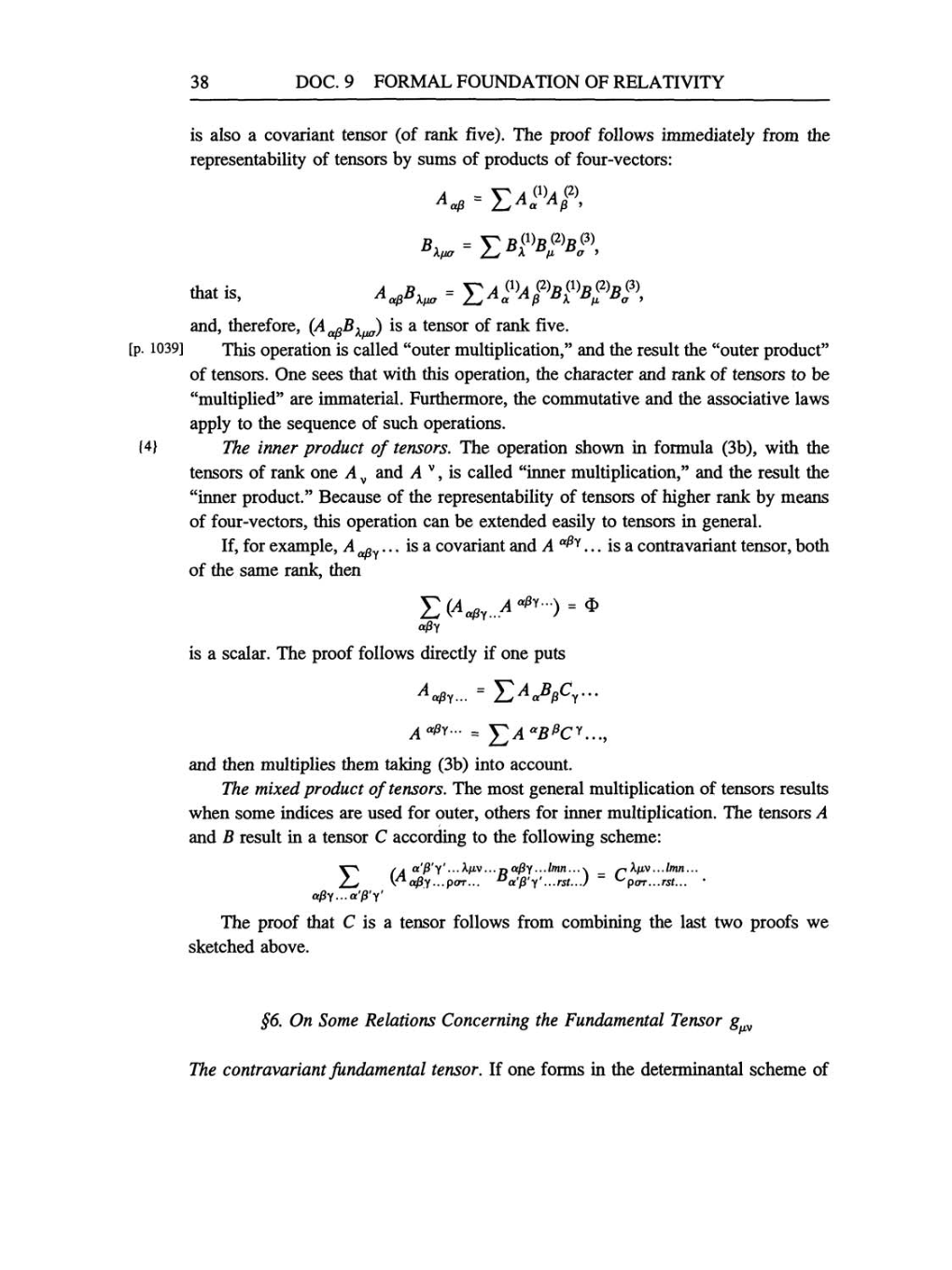38
DOC. 9 FORMAL FOUNDATION OF RELATIVITY
is
also
a
covariant tensor (of rank five). The proof follows immediately from the
representability of tensors by sums of products of four-vectors:
a*
=
V
=
£
bx1]K2V,
that
is,
A
^
=
^A^A^XV,
and, therefore,
(AaBByua)
is
a
tensor
of rank five.
[p.
1039]
This
operation
is called "outer
multiplication,"
and the
result
the
"outer
product"
of
tensors.
One
sees
that with this
operation,
the character and rank
of
tensors to
be
"multiplied"
are
immaterial.
Furthermore,
the commutative and the associative laws
apply
to
the
sequence
of such
operations.
{4}
The
inner
product
of
tensors.
The
operation
shown in formula
(3b),
with the
tensors
of
rank
one
Av
and
Av,
is called "inner
multiplication,"
and the result the
"inner
product."
Because
of
the
representability
of
tensors
of
higher
rank
by means
of
four-vectors,
this
operation
can
be extended
easily
to tensors
in
general.
If,
for
example,
AvaBy...
is
a
covariant and Aßy... is
a
contravariant
tensor,
both
of
the
same
rank,
then
E
(AA
••)
=
*
aßy
is
a
scalar. The
proof
follows
directly
if
one
puts
^aßy...
~
5-/
^
a^ß^y'''
A
aßy...
=
Y,AaBßCt...,
and then
multiplies
them
taking
(3b)
into
account.
The
mixed
product of tensors.
The
most
general multiplication
of
tensors
results
when
some
indices
are
used for
outer,
others for inner
multiplication.
The
tensors A
and
B
result
in
a
tensor
C
according
to
the
following
scheme:
E/a
a'ß'y'...
A/xv...p
aßy...lmn...\
_
^
Ä/xv...Imn...
V* aßy
...par...
**
a'ß'y'
...rst...)
~
^par...rst...
'
aßy...a'ß'y'
The
proof
that
C
is
a
tensor
follows from
combining
the last
two
proofs
we
sketched above.
§6.
On
Some
Relations
Concerning
the Fundamental
Tensor
guv
The
contravariant
fundamental
tensor.
If
one
forms in the determinantal
scheme
of
